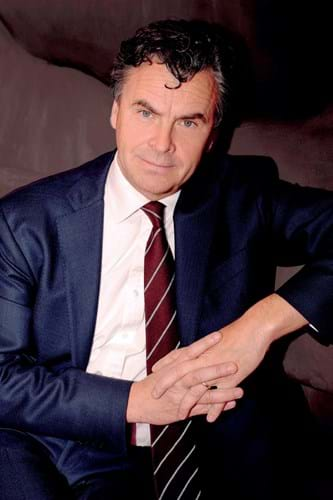TEFAF Maastricht has undergone several years of change. This year brings a shake-up to the exhibitor list with around 40 of the 276 dealers new for this edition.
In what was dubbed a ‘major re-calibration’ of the event, the majority of newcomers are in the Modern section. A shift in the global vetting policy which removed any members with commercial interests from the committees has also been announced for this year’s event.
CEO Patrick van Maris spoke to ATG about the shifts implemented to the now international brand since he took the reins in 2015.
ATG: What does this year’s shake-up to the exhibitor list mean for the fair?
Patrick van Maris, CEO of TEFAF: We always strive to have the best exhibitors possible bringing the best-quality pieces. This year we have around 40 new exhibitors including a lot of dealers who have wanted to be there for a long time. The turnover means that we have a very strong representation in our Modern and Contemporary areas especially.
Does the requirement for exhibitors to reapply every year mean effectively saying goodbye to some long-term participants?
It isn’t saying goodbye, we just have more demand than supply. Exhibitors have to reapply every year [since 2016]. Just because a dealer is not selected for one fair it does not mean that they are not good dealers, we are just looking at the fair as a complete picture. Someone who isn’t selected this year might be selected next year. Changes to the selection procedures mean a guarantee that we will continue to provide consistently high quality going forward.
What were some of the key factors in changing the global vetting policy?
We want to make sure our vetting remains as fair as possible. When we opened in New York you couldn’t have exhibitors vetting*. If we are a global company, we need the same policy around the world and we feel very confident that we have the right vetters in place.
Is it dangerous to lose members of the trade on the vetting panels?
I want to say a bit about this. One factor which is important to communicate is that the chairman of the vetting committee can call on a dealer or dealers when their help is needed. In other words, dealers can be part of the panel, but they cannot vote. Dealers have unbelievable knowledge and connoisseurship, and this was a plausible compromise.
What is behind the changes to TEFAF Maastricht during the past few years?
Every organisation should look back and say ‘What have we achieved? Where do we want to be given recent market developments?’
By bringing in new blood at the organisational level we felt we were able to move forward step by step. We have surveyed our dealers too and kept a close dialogue with them. You need to have a lot of communication if you want to roll out change to a traditional event like TEFAF.
Has the look of TEFAF Maastricht changed this year?
We have done some fine tuning to the floor plan. The major change is that the Tribal and Design sections have been mixed together (though they are still categorised as distinct sections). We’re very excited about the change, which resulted from dealer feedback.
How has having the New York fairs changed the Maastricht fair?
When we decided after 30 years to have a satellite fair in the US, we thought of it as offering a window on Maastricht. It was important for us to extend our brand in the US and to attract Americans to the ‘mothership’ in Maastricht. In the past few years the brand has had a lot of publicity and has openly made many changes. More American visitors and US museums are attending, and it has attracted a new dealer population to the brand. Meanwhile we have worked with Maastricht to make the town and the event even more hospitable.
Yes – in 2017, TEFAF announced a 10-year partnership with the city of Maastricht. What does this mean for the fair?
Importantly it gave a lot of rest in the minds of all involved because we can build strongly on what we have. There is to be more hotel space available to foreign visitors in Maastricht, for example, and the MECC (exhibition centre) is going through a big refurbishment in 2021. That wouldn’t have happened if we hadn’t made the deal.
Just because a dealer is not selected for one fair it does not mean that they are not good dealers, we are just looking at the fair as a complete picture
What’s next for the brand?
We’ve made a lot of changes recently, so our focus now is to fine-tune, consolidate and make sure that what we’ve put in place is successful. Over the past few years we have looked at what we want to be moving into the future and we feel really comfortable with our move into the 21st century.
As other big fairs open and expand (such as MCH buying Masterpiece and Frieze LA), what does that mean for TEFAF?
All competition is healthy competition.
What is your goal for each event?
To make sure that people can come, experience the best art, buy and trust.
* It is not a legal requirement that there should be no individuals with a commercial interest involved with vetting in the US. However, in the US they are more aware and sensitive to situations where conflict of interest could arise, so when establishing the New York fairs, TEFAF took the decision from the outset not to include those with commercial interests in the vetting committees. TEFAF is now making this a company-wide policy.















